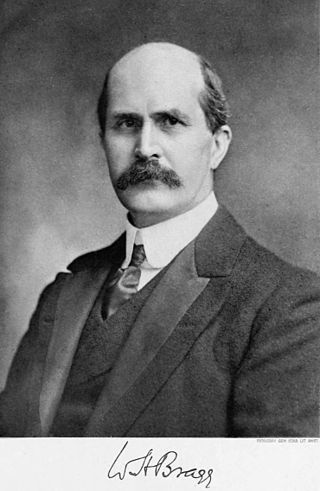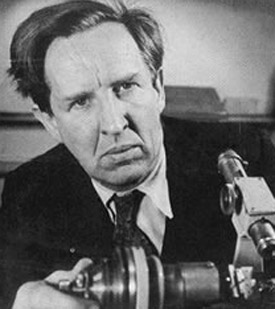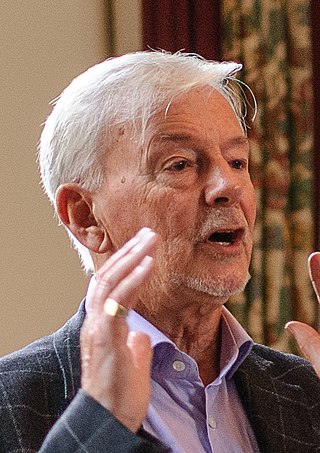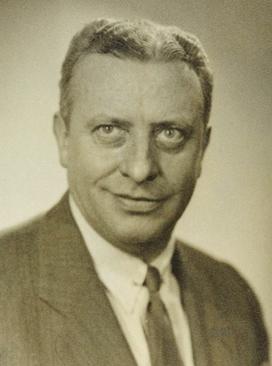
Max Ferdinand Perutz was an Austrian-born British molecular biologist, who shared the 1962 Nobel Prize for Chemistry with John Kendrew, for their studies of the structures of haemoglobin and myoglobin. He went on to win the Royal Medal of the Royal Society in 1971 and the Copley Medal in 1979. At Cambridge he founded and chaired (1962–79) The Medical Research Council (MRC) Laboratory of Molecular Biology (LMB), fourteen of whose scientists have won Nobel Prizes. Perutz's contributions to molecular biology in Cambridge are documented in The History of the University of Cambridge: Volume 4 , published by the Cambridge University Press in 1992.

Robert Hooke FRS was an English polymath active as a scientist, natural philosopher and architect, who is credited to be one of the first two scientists to discover microorganisms in 1665 using a compound microscope that he built himself, the other scientist being Antoni van Leeuwenhoek in 1674. An impoverished scientific inquirer in young adulthood, he found wealth and esteem by performing over half of the architectural surveys after London's great fire of 1666. Hooke was also a member of the Royal Society and since 1662 was its curator of experiments. Hooke was also Professor of Geometry at Gresham College.

Robert Boyle was an Anglo-Irish natural philosopher, chemist, physicist, alchemist and inventor. Boyle is largely regarded today as the first modern chemist, and therefore one of the founders of modern chemistry, and one of the pioneers of modern experimental scientific method. He is best known for Boyle's law, which describes the inversely proportional relationship between the absolute pressure and volume of a gas, if the temperature is kept constant within a closed system. Among his works, The Sceptical Chymist is seen as a cornerstone book in the field of chemistry. He was a devout and pious Anglican and is noted for his writings in theology.

Sir William Henry Bragg was an English physicist, chemist, mathematician, and active sportsman who uniquely shared a Nobel Prize with his son Lawrence Bragg – the 1915 Nobel Prize in Physics: "for their services in the analysis of crystal structure by means of X-rays". The mineral Braggite is named after him and his son. He was knighted in 1920.
The Boyle Lectures are named after Robert Boyle, a prominent natural philosopher of the 17th century and son of Richard Boyle, 1st Earl of Cork. Under the terms of his Will, Robert Boyle endowed a series of lectures or sermons which were to consider the relationship between Christianity and the new natural philosophy then emerging in European society.

The Royal Aeronautical Society, also known as the RAeS, is a British multi-disciplinary professional institution dedicated to the global aerospace community. Founded in 1866, it is the oldest aeronautical society in the world. Members, Fellows, and Companions of the society can use the post-nominal letters MRAeS, FRAeS, or CRAeS, respectively.

John Desmond Bernal was an Irish scientist who pioneered the use of X-ray crystallography in molecular biology. He published extensively on the history of science. In addition, Bernal wrote popular books on science and society. He was a communist activist and a member of the Communist Party of Great Britain (CPGB).
The Romanes Lecture is a prestigious free public lecture given annually at the Sheldonian Theatre, Oxford, England.

John Zachary Young FRS, generally known as "JZ" or "JZY", was an English zoologist and neurophysiologist, described as "one of the most influential biologists of the 20th century".

Keith Ward is an English philosopher, and theologian. He is a fellow of the British Academy and a priest of the Church of England. He was a canon of Christ Church, Oxford, until 2003. Comparative theology and the relationship between science and religion are two of his main topics of interest.
Arthur Duncan Gardner, FRCP, FRCS was a British physician and scientist known for his contributions to the development of penicillin and his role as the Regius Professor of Medicine at the University of Oxford from 1948 to 1954.

Edward Charles Gurney Boyle, Baron Boyle of Handsworth, was a British Conservative Party politician and Vice-Chancellor of the University of Leeds.

Sir Henry Alexander Miers, FRS was a British mineralogist and crystallographer.

Sir Frederick Charles Frank, OBE, FRS was a British theoretical physicist. He is best known for his work on crystal dislocations, including the idea of the Frank–Read source of dislocations. He also proposed the cyclol reaction in the mid-1930s, and made many other contributions to solid-state physics, geophysics, and the theory of liquid crystals.

The Oxford University Scientific Society (OUSS) is a student scientific society at the University of Oxford. It was founded in 1882 as the Oxford University Junior Scientific Club. It is one of the oldest undergraduate science societies in the world. It organizes talks on scientific subjects on a weekly basis.
Sir Eric Keightley Rideal, was a British physical chemist. He worked on a wide range of subjects, including electrochemistry, chemical kinetics, catalysis, electrophoresis, colloids and surface chemistry. He is best known for the Eley–Rideal mechanism, which he proposed in 1938 with Daniel D. Eley. He is also known for the textbook that he authored, An Introduction to Surface Chemistry (1926), and was awarded honours for the research he carried out during both World Wars and for his services to chemistry.

John Farquhar Fulton was an American neurophysiologist and historian of science. He received numerous degrees from Oxford University and Harvard University. He taught at Magdalen College School of Medicine at Oxford and later became the youngest Sterling Professor of Physiology at Yale University. His main contributions were in primate neurophysiology and history of science.

Elspeth Frances Garman is professor of molecular biophysics at the University of Oxford and a former President of the British Crystallographic Association. She is also Senior Kurti Research Fellow at Brasenose College, Oxford. The "Garman limit", which is the radiation dose limit of a cryocooled protein crystal, is named after her.
Thomas Wingate Todd was an English orthodontist who is known for his contributions towards the growth studies of children during early 1900s. Due to his efforts, Charles Bingham Bolton Fund was established. He served as editor in chief of several journals over his lifetime.

Nelamangala Vedavyasachar Madhusudana is an Indian physicist and an emeritus scientist at Raman Research Institute. Known for his research on liquid crystals, Madhusudhana is an elected fellow of Indian Academy of Sciences and Indian National Science Academy. The Council of Scientific and Industrial Research, the apex agency of the Government of India for scientific research, awarded him the Shanti Swarup Bhatnagar Prize for Science and Technology, one of the highest Indian science awards, for his contributions to physical sciences in 1989.














